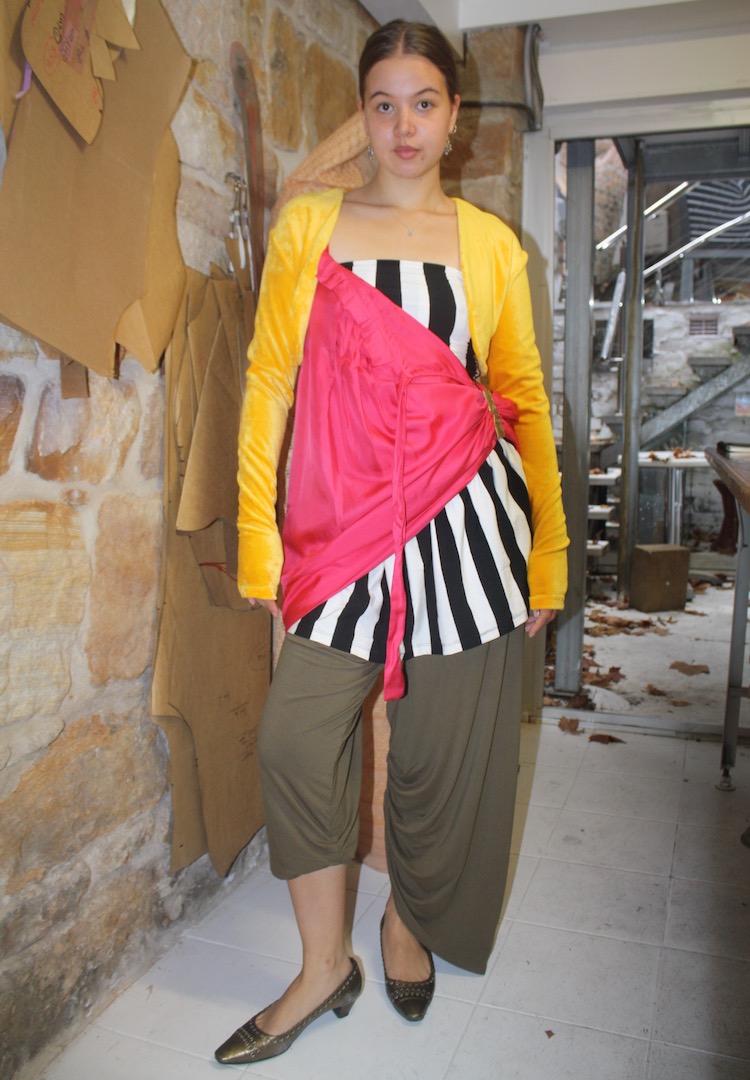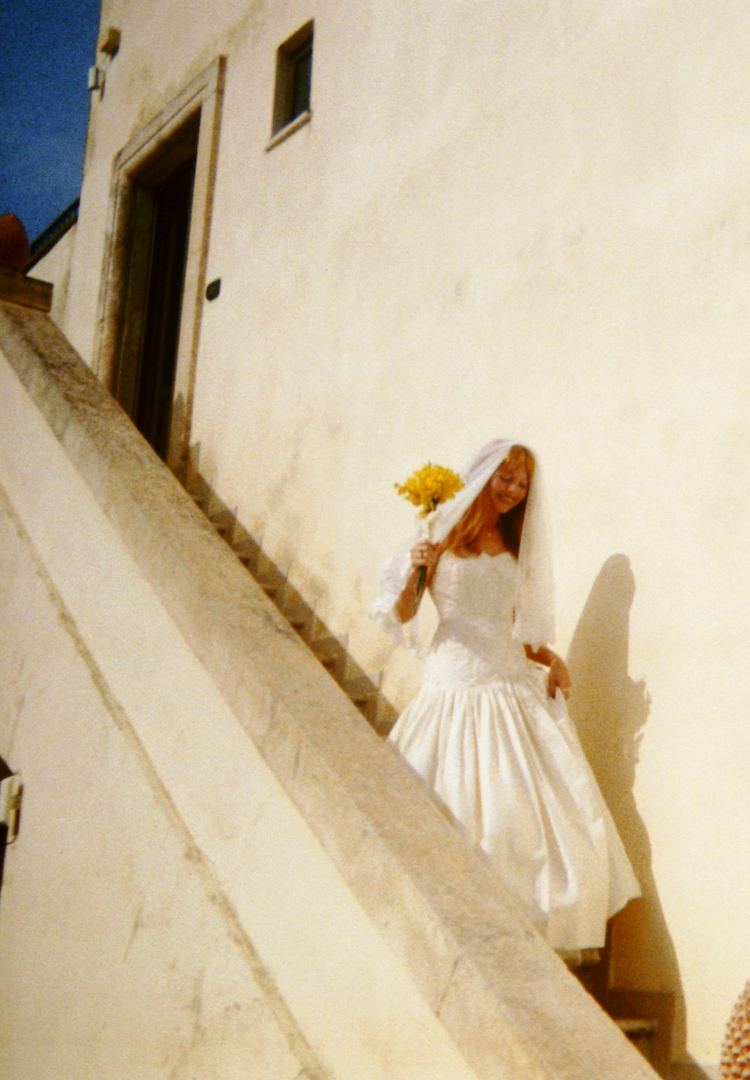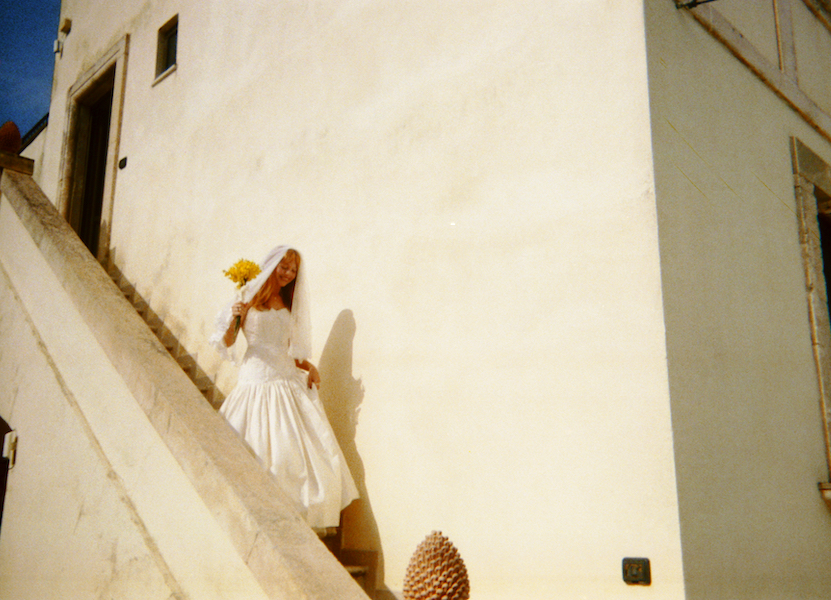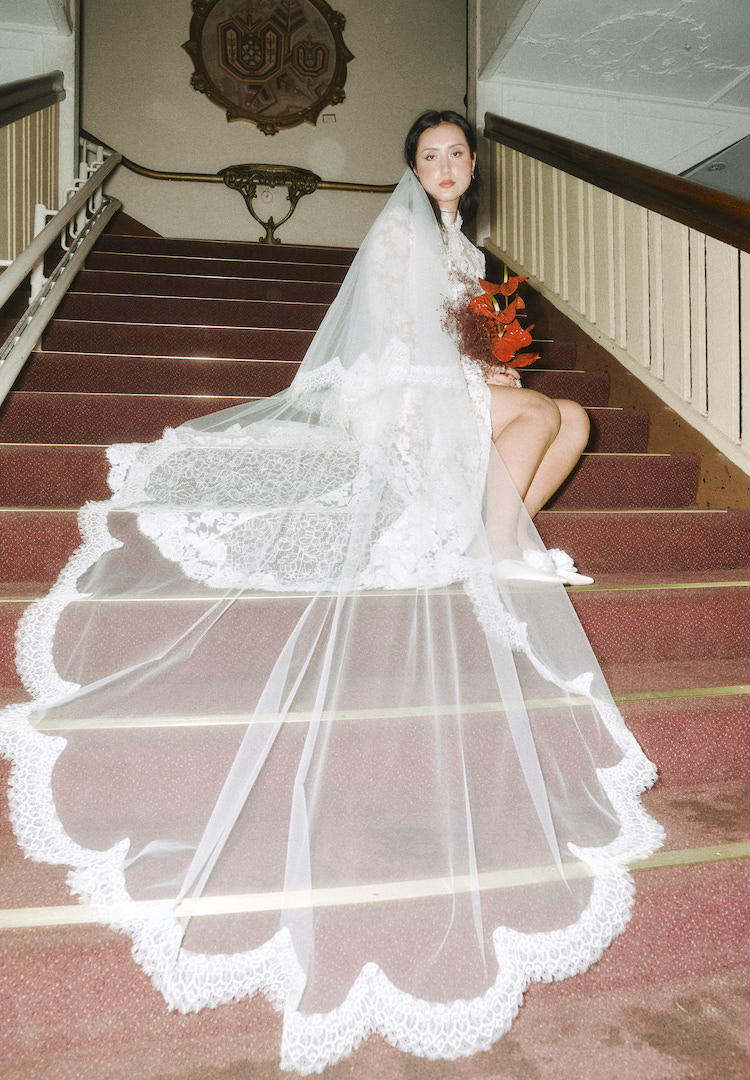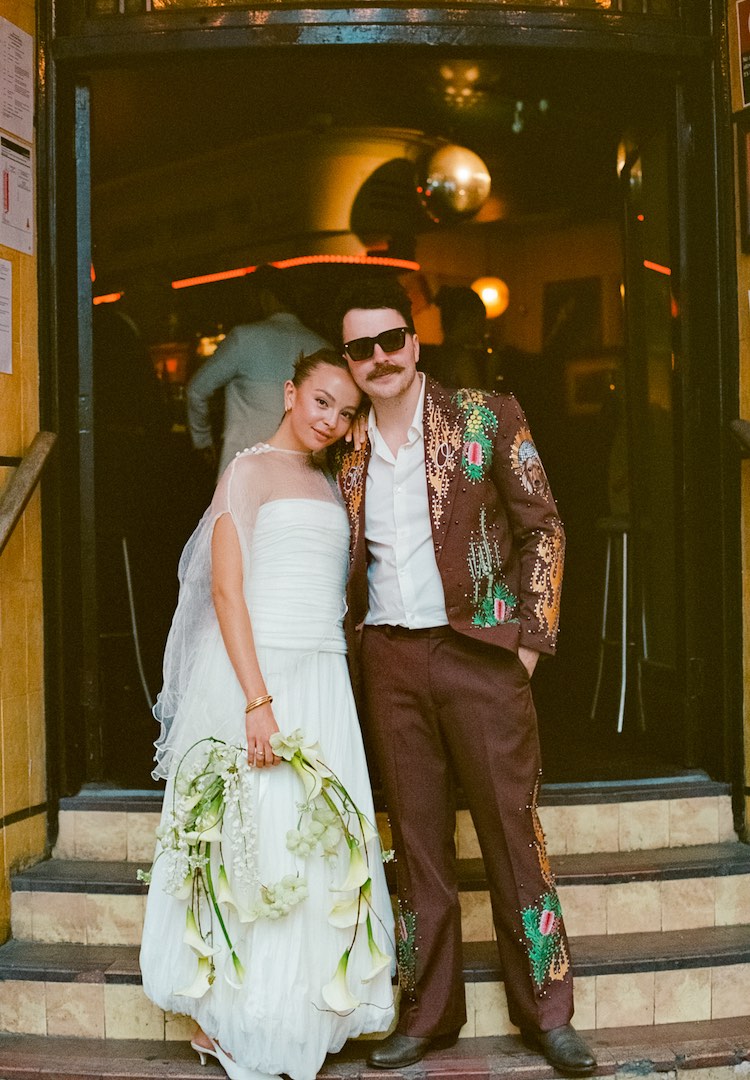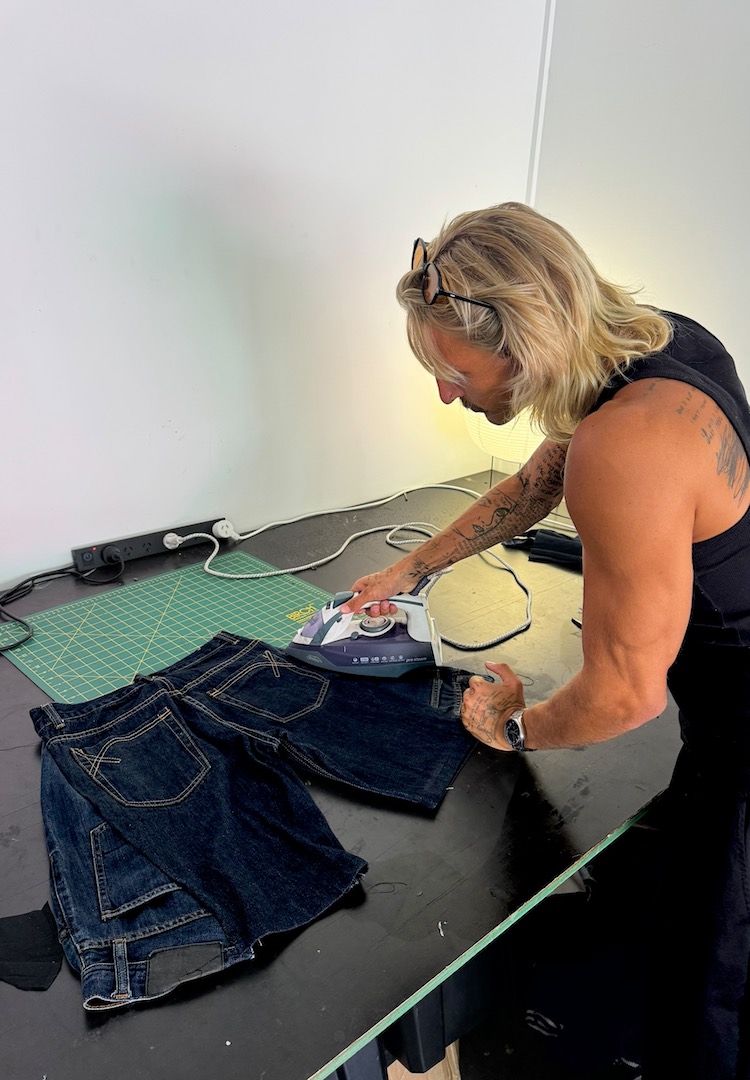A bride’s guide to wearing vintage at your wedding
IMAGE VIA @lottiebeaspencer
WORDS BY MARYEL SOUSA
For the ‘anti-assembly line’ bride.
Weddings. They’re the best day of many couples’ lives but they’re also notoriously wasteful. The average wedding will produce over 180kg of waste and roughly the same carbon emissions as a cross-country flight.
Having a more sustainable wedding doesn’t mean you have to run off and elope (though we do love to see it), it just means you have to plan more mindfully. And the best place to start is with your dress.
Looking for more fashion news and features? Head to our Fashion section.
With the rise of the wedding outfit change, pre-loved dresses are the perfect choice for brides who care about the planet. But beyond all the practical benefits, vintage and upcycled gowns are just incredibly unique.
“What makes a vintage dress special is having something ancient that holds history,” says Tara Rowe, vintage curator and owner of Call Me the Breeze. “I love a dress with a story behind it, or a piece you can see has a ton of work put into it.”
It’s something that can’t be manufactured. For Grace Corby, owner and curator of Art Garments, vintage bridal feels romantic and meaningful, but most of all, exclusive. “I’m just neurotic about singularity,” she tells me. “Hunting for a vintage dress is thrilling and you avoid feeling like a bride on an assembly line.”

Tara Rowe, founder of Call Me the Breeze
Everyone wants to feel special on their wedding day but while newer ‘unique’ gowns run the risk of eliciting cringes in 10 years (see: Marnie Michaels’ floral crown), vintage dresses have already proven they’re here to stay. In the words of Lizzie Langridge, owner of vintage bridal boutique, Love James, “Great vintage never gets old.”
“A vintage dress made with beautiful fabric and craftsmanship comes with an innate presence that’s not replicable any other way but with time. It’s as close to timeless as you can get, something that has stood the test of time,” she says.
How to source vintage dresses
When London-based photographer Lottie Spencer got married earlier this year, she found her vintage dress on eBay – a beautiful floor-length gown with an asymmetric hem and corseted bodice. It was a gorgeous find, though not an easy one. “I did do a lot of browsing online, but I was nervous to invest in case they weren’t quite right,” she says. “But I’m so glad I [bought my dress] because I still absolutely love it.”
Florence Mangan, an interior designer based in New York, had a similar experience, searching high and low on pre-loved platforms until she landed on a ‘layer cake’ vintage couture dress on Vestiaire Collective. The gown was non-returnable, so it was a risky buy but in her heart, she knew she could make it work.

Lottie Spencer on her wedding day
In another era, brides would traditionally find a bridal shop, make an appointment and try on dozens of dresses with the help of friends, family and a stylist, before ultimately choosing something vaguely reminiscent of their dream dress within their budget. For some, this event was a highlight of their wedding-planning process. For others, it was stressful.
Nowadays, more brides like Lottie and Florence are choosing gowns from online sellers like Call Me The Breeze. Tara says that online shopping gives brides more independence, as it removes the noise of unwanted opinions often associated with a crowded bridal appointment.
That’s not to say private appointments are obsolete. At Art Garments, Grace has curated over 500 pieces ranging from casual to couture, to ensure she’s got something for every bride who enters her doors. Likewise, Love James prefers the face-to-face experience. “Each appointment is uniquely tailored to the bride and where they are in their search. I’ll suggest pieces that match shapes and textures they are drawn to, and also some unexpected ones for them to try, too,” says Lizzie.
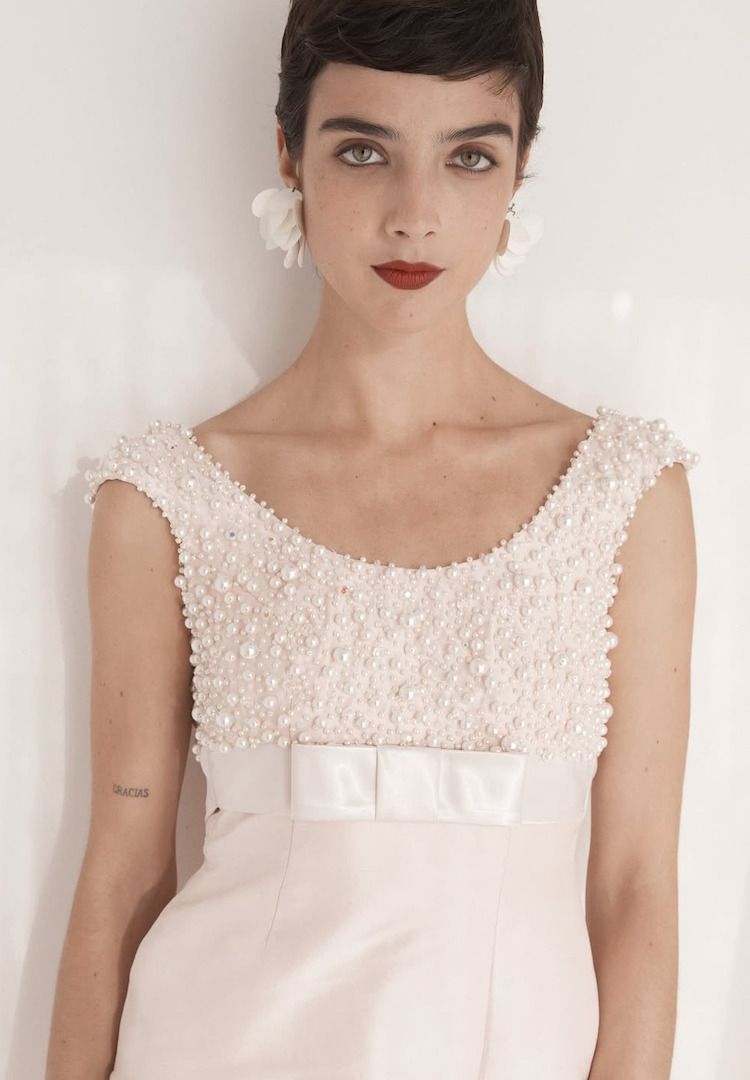
Image via Art Garments
Where you source a vintage gown comes down to preference. Risk-takers can try their luck with online platforms like eBay or Vestiaire Collective, where there’s an endless selection from international sellers, or look closer to home for local curators. Signing up for curators’ newsletters and pencilling drops into your calendar can boost your odds of scoring your dream dress before another bride.
What to look for in vintage bridal
When shopping for something old, having a clear picture of the designs you’re looking for can shield you from distractions. Prep a mood board for your appointment, or keep in an open tab while you shop to stay on track.
With that said, it’s nearly unanimous among curators and brides that an open mind is key to finding The One.“If something absolutely lights you up inside, this is one occasion where you can indulge and go for it,” says Lizzie.
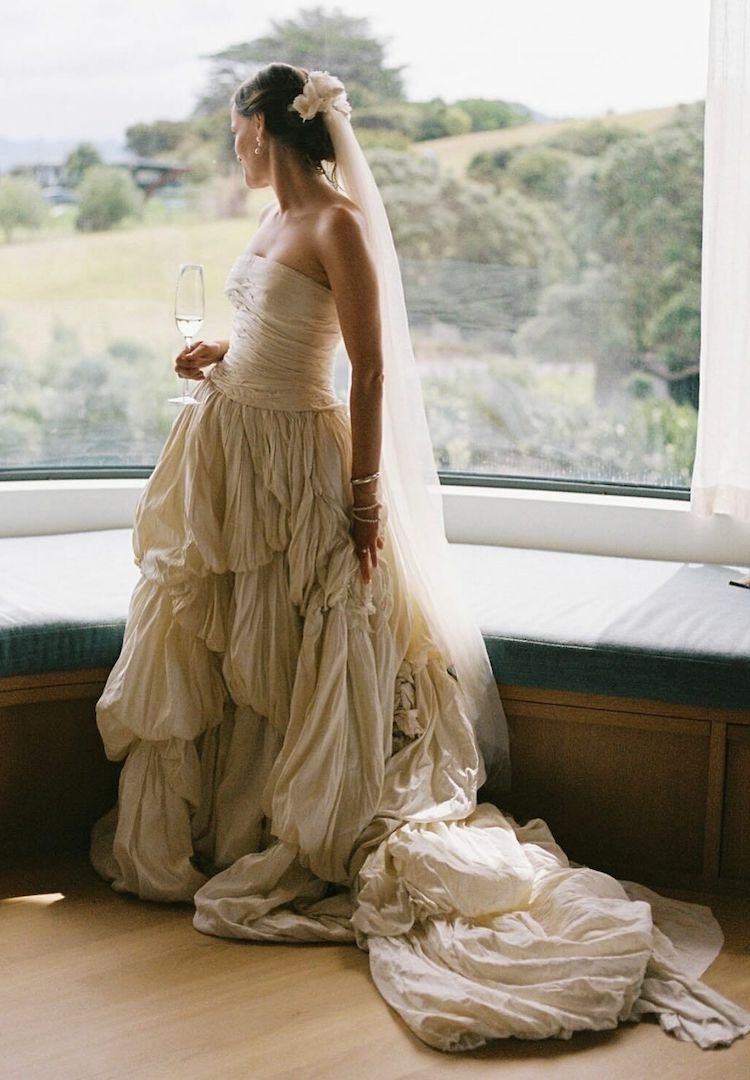
Florence Mangan on her wedding day
Regardless of the design, Grace recommends focusing on dresses with good bones – fabric, construction and unique details you love. Good bones are what initially drew Florence to her voluminous vintage dress, which she had upcycled by a talented local tailor. “Although my original dress was a little outrageous, I had so much faith in its beautiful rough silk and the way the fabric fell, I knew even if I completely changed the dress, it was worth the purchase,” she shares.
Vintage-friendly fittings
One of the most devastating scenes in rom-com history is in 27 Dresses, when Jane (our unlucky-in-love protagonist) discovers her little sister, Tess, has altered their late mother’s wedding dress beyond recognition. Every dated detail that had made the gown special was completely destroyed.
So, how do you avoid sentencing your dress to a similar fate? Across the board, the answer’s the same: a good tailor is worth their weight in gold. More if they’re able to retain the elements that make your dress one-of-a-kind. “Work with someone with a reverence for clothing who can creatively brainstorm options and tailor garments to match their original finishings,” advises Lizzie.
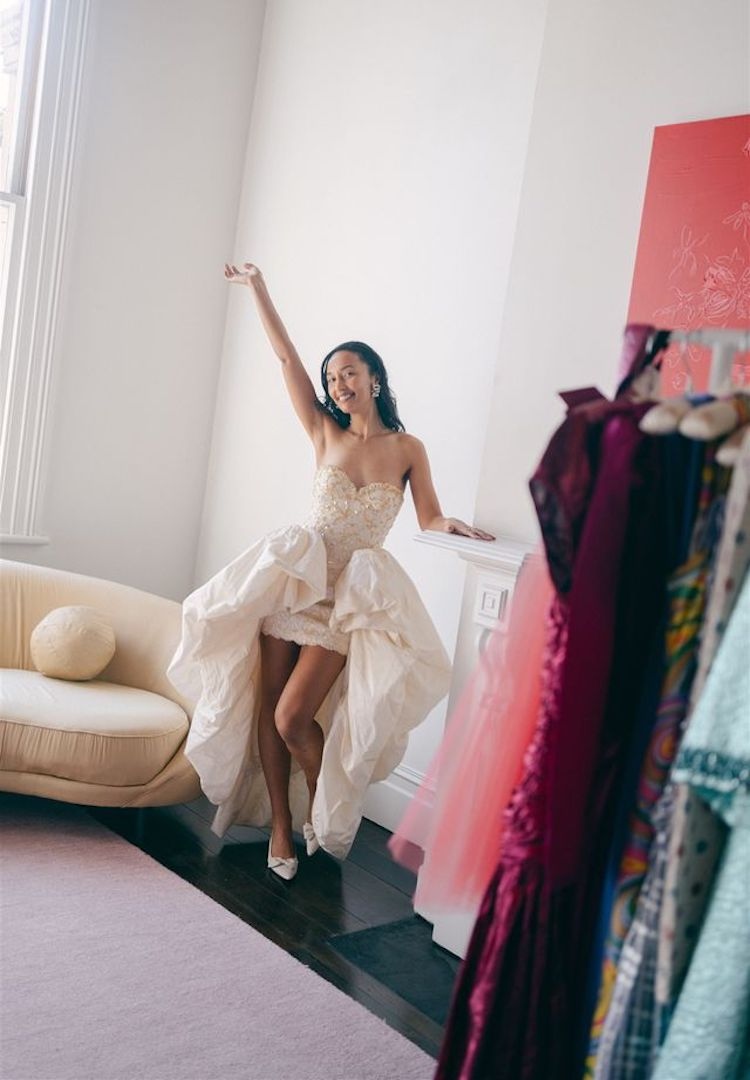
Image via Love James
When online shopping (especially when there’s a strict return policy), Tara recommends knowing your measurements and cross-checking those with the dress you have your eye on. “Some dresses can be altered, some just simply can’t be,” she says. “If it requires tonnes of work, it’s not the one.”
However, bridal appointments offer a bit more flexibility. Grace tells me it’s rare for a bride to leave her studio with a perfectly fitted dress, so as long as you can try a gown on, avoid limiting yourself to pieces only in your exact size. A stylist can advise you about your options and, as Grace says, “miraculous things can be done to fit a wedding dress.”
For more on sustainable wedding planning, head here.

